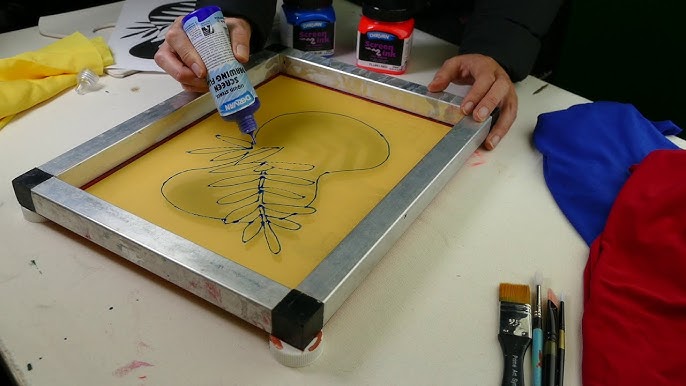ChatGPT said: 10:9 Design reviews: uncovering the strengths and weaknesses
Wiki Article
The Important Overview to Recognizing Screen Printing and Its Versatile Uses
Screen printing has an abundant background that goes back to old times, evolving into an advanced strategy made use of throughout various industries today. This guide checks out the complexities of the screen printing process, detailing its applications in advertising, style, and home décor - 10:9 Design Abilene. Understanding these basics can open creative potential for both artistic and industrial tasks. The following areas will certainly expose vital pointers and techniques to enhance one's screen printing venturesThe Background of Screen Printing
Although screen printing has roots that map back centuries, its development shows the artistic and technical innovations of different cultures. Coming from in old China, the method was initially utilized for embellishing fabrics and later spread to Japan, where it became important to Ukiyo-e woodblock printing. The approach changed to Europe in the 18th century, where it acquired popularity amongst artisans and industrial printers. The innovation of image solution in the 20th century transformed screen printing, enabling even more detailed designs and better performance. Musicians like Andy Warhol further drove its appeal, making use of the medium to develop iconic works that mixed commercialism and great art. By the late 20th century, screen printing had established itself as a versatile technique, employed in vogue, advertising and marketing, and art. Today, it remains to advance, integrating electronic innovation and expanding its applications across various markets.The Screen Printing Process Explained
Screen printing transforms artistic visions into concrete layouts via a series of accurate steps. An image is developed and then moved onto a screen, normally made of fine mesh fabric extended over a structure. A light-sensitive solution is applied to the screen, which is subjected to light, solidifying in locations not covered by the image. After rinsing the unhardened emulsion, a stencil is formed.Next off, the screen is placed over the substrate, whether it be fabric, paper, or another material. Ink is then pressed via the open areas of the pattern using a squeegee, transferring the style onto the substratum listed below. This procedure can be repeated for numerous shades, calling for different displays for every shade. The printed thing is healed making use of heat to assure the ink sticks correctly, resulting in a sturdy, vivid style all set for usage.
Kinds of Screen Printing Techniques

Furthermore, specialized strategies, such as discharge screen printing, remove dye from the textile to create softer prints, while aluminum foil screen printing applies metal aluminum foil to accomplish a shiny surface (10:9 Design LLC Company). Each strategy provides unique characteristics, dealing with various creative requirements and manufacturing ranges, inevitably increasing the possibilities within the screen printing domain
Applications of Screen Printing in Different Industries

In addition, the signage and advertising markets make use of screen printing for creating attractive display screens and banners. This method permits for strong shades and elaborate layouts that capture attention. In electronic devices, screen printing is used for using conductive inks to motherboard, crucial for component connections. The home decoration sector welcomes screen printing to generate distinct styles on textiles and wall art. On the whole, screen printing functions as an important device throughout varied areas, boosting items with individualized and aesthetically attractive graphics.
Tips for Effective Screen Printing Projects
While carrying out a screen printing task, mindful focus to information can substantially enhance the final result. First, selecting premium materials is important; this consists of the screen, inks, and substrates. Utilizing proper mesh counts can affect ink deposition and detail resolution. Prep work is read more similarly crucial; thorough cleansing of screens and proper exposure times assure crisp prints.Next, precise registration is critical for multi-color prints. Utilizing placement devices can help achieve specific layering. Furthermore, screening prints on scrap materials prior to production aids determine possible issues without throwing away resources.

Frequently Asked Concerns
What Products Are Ideal for Screen Printing on Textile?
Cotton and polyester blends are perfect for screen printing on textile due to their resilience and ink absorption. Furthermore, specialized fabrics like silk or canvas can produce one-of-a-kind textures and finishes, boosting the overall style top quality.How Do I Tidy and Maintain Screen Printing Tools?
To keep and cleanse screen printing tools, one need to on a regular basis clean displays with appropriate solvents, inspect mops for wear, lube relocating parts, and shop all products in a dry, dust-free environment to prolong their lifespan.What Are the Ecological Effects of Screen Printing?
Screen printing can have significant ecological effects, including chemical waste from inks and solvents, water use during cleansing processes, and energy usage. Sustainable practices and environmentally friendly materials are important for lessening these negative effects.Can Screen Printing Be Done in the house Successfully?
Screen printing can be properly done at home with the right materials and strategies. Hobbyists can develop high quality prints, though success relies on their ability degree, equipment, and understanding of the procedure entailed.
What Are the Prices Connected With Starting a Display Printing Service?

Beginning a screen printing company entails prices for tools, materials, and workspace. Preliminary costs generally range from a few hundred to numerous thousand dollars, depending on the scale, high quality of machinery, and desired production capability.
Screen printing has a rich background that dates back to old times, evolving into an advanced method utilized across various industries today. An additional method, rotary screen printing, uses cylindrical displays, helping with continual printing on fabric rolls, thus enhancing efficiency for massive manufacturings. Furthermore, specialized strategies, such as discharge screen printing, remove color from the material to produce softer prints, while foil screen printing applies metallic aluminum foil to achieve a glossy coating. In the style sector, screen printing is commonly utilized to produce vibrant layouts on garments, allowing brand names to display their one-of-a-kind designs. Cotton and polyester blends are ideal for screen printing on fabric due to their resilience and ink absorption.
Report this wiki page